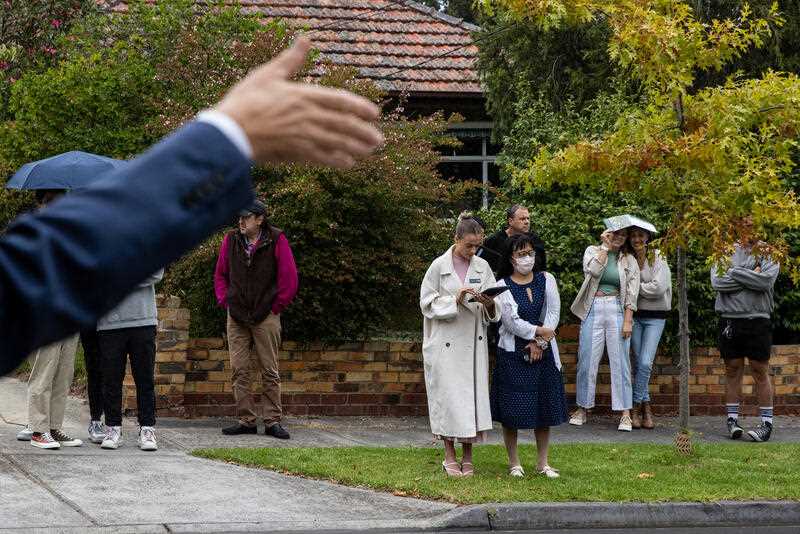Despite substantial buyer demand across the country, property listings are continuing to plummet, resulting in continuing record prices, according to Real Estate Institute of Australia (REIA) president Hayden Groves.
The latest data from SQM Research reveals a dramatic fall in house listings since last year; there were 218,398 listings in March 2022 compared to 256,568 in March 2021, while figures from February 2022 show 214,495 listings compared to 257,952 in February 2021.
The REIA is urging the major parties this federal election to create “big picture structural changes” to give Australians a fair go. But, Mr Groves also said he doesn’t believe banning negative gearing or foreign investment is the way to make a dent in the market.
“The notion that abolishing negative gearing would increase housing supply is flawed thinking. Any policy that disincentivises property investment constrains supply in the rental sector which is bad news for rental affordability,” he said.
“Abolishing negative gearing would likely result in an increase in rents as investors would look to replace the lost income that negative gearing provided. In a market where the vacancy rate is less than one per cent, tenants are already under rental pressure.
“With household budgets already under inflationary related stresses, rental increases would only exacerbate current hip pocket challenges.”
Foreign investment, according to Mr Groves, is an “important” tool to providing enough housing supply, not the reverse.
“[Banning foreign investment] is unlikely to lead to any increase in housing supply with homes for sale or rent. Foreign investment is important in providing enough housing supply, especially in the ‘off-plan’ sector which helps support construction jobs and adds important rental supply to the market,” he said.
“Foreign investment in residential housing has fallen to its lowest level in 15 years with the Foreign Investment Review Board showing a mere 4,384 approvals in the 12 months to June 2021 totalling just $10.4 billion, a fall of $6.7 billion on the year before. It peaked in 2017/18 where more than $30 billion was invested.”
Mr Groves would like the Federal Government to instead phase out stamp duty and develop a national plan for housing that deals with the lack of supply.
“Stamp duty phase out or at least waivers will help first home buyers (FHBs) by improving stock mobility in the market. Stamp duty is a tax impediment to buyers who would otherwise make a selling and buying decision. Without this barrier, more stock would be freed up across markets, delivering more supply choice for first home buyers,” he said.
“We believe there should be a national plan for housing that deals with supply side issues along with interest rate deductions for first homeowners which will become very important to assist FHBs with ongoing serviceability.”
In last month’s federal budget, the Coalition Government announced an expansion of the Home Guarantee Scheme, a move applauded by REIA and the Property Council of Australia (PCA).
“Property has remained a standout investment for homeowners with values increasing at the highest rate in two decades with a rise of 25.1 per cent in 2021, with the weighted median house price now above $1m for Australian eight capital cities,” Mr Groves said.
“These kinds of prices, while good for owners, are concerning for first time buyers. Scott Morrison’s announcement that the Home Guarantee Scheme was to be extended with the price caps increasing is a great help in easing affordability.”
With new loan commitments for owner-occupier first home buyers decreasing by 8.3 per cent in February this year, Mr Groves said the numbers of first home buyers are continuing to ease.
“According to our Housing Affordability Report, the number of first home buyers decreased to 37,620, a fall of 0.4 per cent during the quarter with first home buyers now making up 34.1 per cent of owner-occupied dwelling commitments, a decrease of 7.8 percentage points over the year.
“It’s a similar story for renters who are facing tight vacancy rates at under one per cent in many capital cities while the proportion of income required to meet median rent increased to 23 per cent, an increase of 0.1 per cent over the quarter and an increase of 0.3 per cent over 2021, according to REIA’s Housing Affordability Report.”
PCA chief executive Ken Morrison has “warmly welcomed” the decision to end the house price caps in the Home Guarantee Scheme and said it will help more individuals and families bridge the deposit gap.
“Given the extent of house price increases in recent years, it makes sense to lift the scheme’s house price caps and we welcome this decision,” Mr Morrison said.
“According to our recent research, 70 per cent of voters fear the great Australian dream of home ownership is now out of reach, and almost 90 per cent of people trying to get into the market say housing affordability is one of the most important issues that will decide their vote in the upcoming election.”
He said the current Federal Government’s own forecast showed a 163,400 shortfall of housing supply between 2025 and 2032, according to the National Housing Finance and Investment Corporation.
“Australia is set to experience a housing supply crunch, falling by around 35 per cent right at the time that our population resumes its normal growth trajectory. Unless Australia is able to turn this supply deficit around, affordability pressures will remain acute,” Mr Morrison said.
“We again call on the Federal Government and the Opposition to commit to working in partnership with state and territory governments to address housing supply blockages to support affordability outcomes.”



